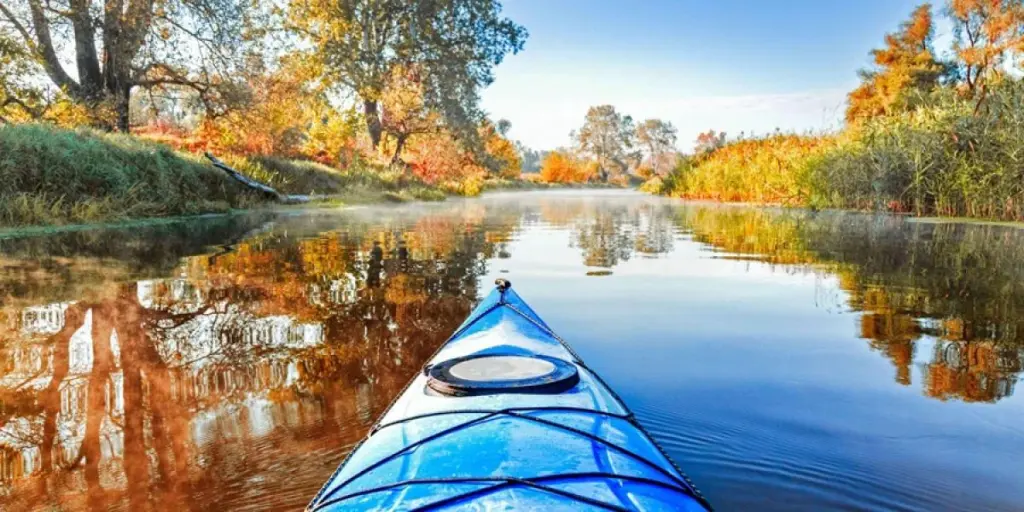Table of Contents
● Introduction
● Market Overview
● Selecting the Right Canoe or Kayak
● Top Picks for 2024
● Conclusion
Introduction
In 2024, the canoe and kayak market unfolds a thrilling blend of innovation and tradition, inviting both seasoned paddlers and newcomers to explore its latest offerings. This comprehensive guide delves into the vibrant spectrum of canoes and kayaks, from sleek designs tailored for the adrenaline-fueled racer to serene vessels perfect for a peaceful day on the lake. With a keen eye on emerging market trends, top-tier models, and pivotal buying considerations, we aim to equip you with the knowledge to navigate the vast waters of choice confidently.
Market Overview
The global canoe and kayak market has been experiencing steady growth over the past few years. In 2023, the market size was valued at USD 747.79 million. It is projected to reach USD 955.51 million by 2030, growing at a Compound Annual Growth Rate (CAGR) of 2.8%.
The market is segmented by product type, including canoes, kayaks, and related gear and accessories. The global kayak market, a segment of the canoe and kayak market, is expected to be worth USD 177.2 million in fiscal year 2023, up from USD 171 million in fiscal year 2022. From 2023 to 2033, the global kayak market is predicted to rise with a steady 3.5% CAGR, reaching a market size of USD 250.5 million by 2033.
The growth of the market can be attributed to the increasing popularity of adventure tourism and water sports, as well as the rising demand for canoes and kayaks in areas where tourism is a significant resource for the economy. However, the high costs of canoes and kayaks may pose a challenge for market vendors.

Selecting the Right Canoe or Kayak
Differences between Canoes and Kayaks:
Canoes and kayaks differ in paddling technique, structure, seating, and use. Kayaks use a two-bladed paddle and feature a closed deck with a cockpit, offering protection and efficiency in rough waters. Paddlers sit low, often with a backrest. Canoes, with a single-bladed paddle, have an open design and higher seating, either on a bench or kneeling, providing more cargo space and ease of portage. This makes canoes ideal for trips requiring gear transport and overland travel, while kayaks are better suited for solo expeditions and challenging aquatic environments.
Types of Canoes:
Recreational Canoes: Designed for stability and comfort, ideal for beginners and families, suitable for flat water like calm lakes and slow-moving rivers.
Touring Canoes: Longer and slimmer than recreational canoes, designed for covering longer distances with ease, offering better tracking and more storage.
Whitewater Canoes: Shorter and made for durability to handle fast-moving water and rapids, featuring design elements like high rockers for quick turns.
River Canoes: A mix between whitewater and touring canoes, offering stability in rough water and efficient turning, suitable for downriver trips.
Inflatable and Folding Canoes: Offer great convenience for storage and transport, with inflatable canoes being less durable but practical for calm waters, and folding canoes offering portability with durability similar to hard shells in some models.
Types of Kayaks:
Rigid or Hard-Shell Kayaks: These are the most common and come in various materials like rotomolded polyethylene, blow-molded plastic, composite (fiberglass or aramid), and ABS plastic. Each material offers a balance between durability, weight, and cost. Hard-shell kayaks are preferred for activities ranging from fishing to ocean exploration due to their durability and variety of designs.
Inflatable Kayaks: Known for their convenience in transportation and storage, inflatable kayaks pack down small but vary in performance, with some approaching the rigidity of hard-shell models.
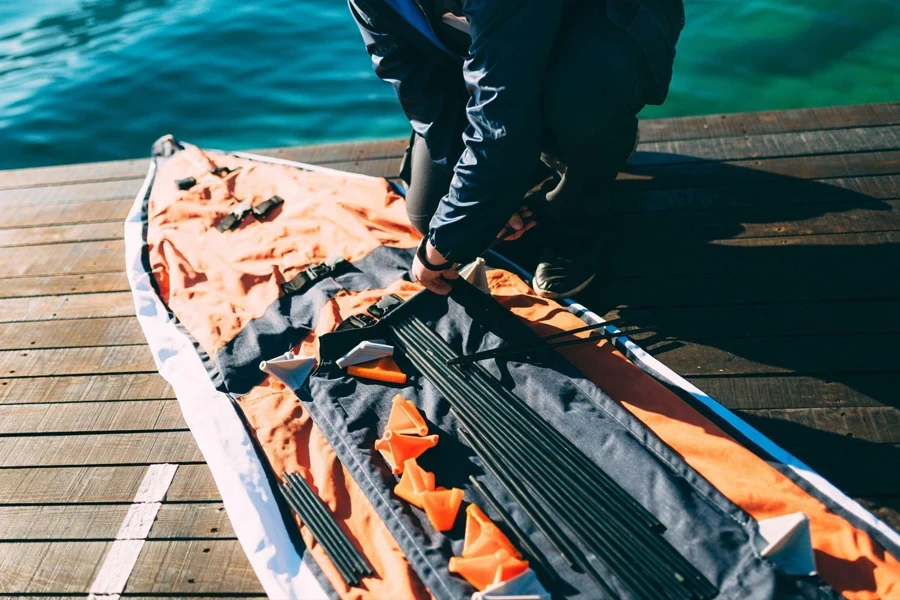
Materials of Canoes:
Wooden canoes embody tradition and craftsmanship, offering a timeless appeal and a deep connection to paddling heritage. These handcrafted or artisan-made vessels require careful maintenance but can become cherished heirlooms. Composite canoes, made from materials like fiberglass and Kevlar, provide a superior blend of durability and lightweight performance, appealing to performance-focused paddlers despite their higher cost and complex construction. Aluminum canoes, known for their durability and affordability, marked a broad accessibility to canoeing in the 1970s, though they are heavier and less refined than other materials. Plastic canoes offer an economical and durable choice, suitable for casual paddling, but may compromise on weight and performance over time. Softshell canoes, made from materials like PVC and nylon, showcase innovation with their portability and resilience, ideal for remote adventures or paddlers with storage constraints.
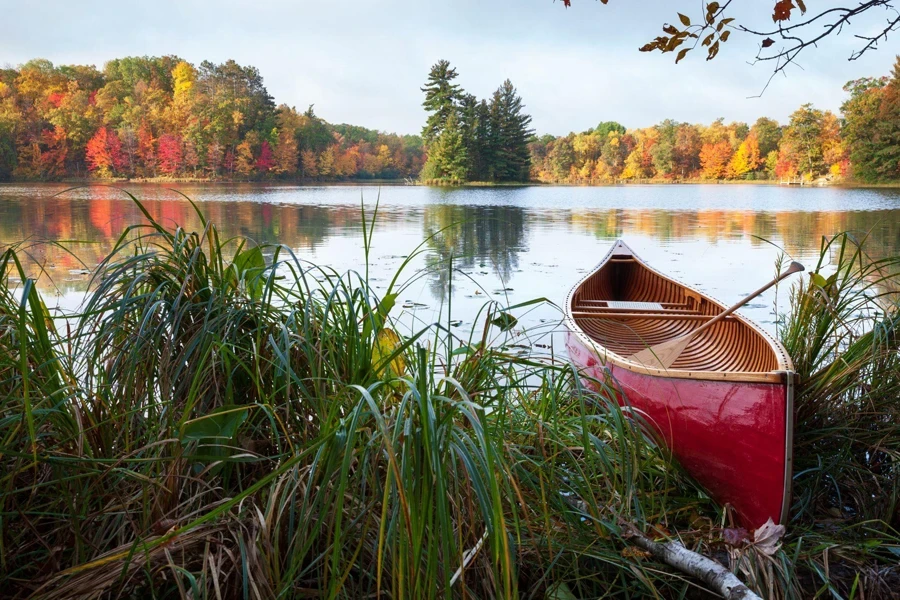
Materials of Kayaks:
Roto-molded plastic kayaks, made from polyethylene, offer durability and affordability, making them a popular choice despite being heavier and less rigid, with a need for protective storage to prevent UV damage. Thermal form plastic kayaks, using materials like ABS, provide a balance between weight and stiffness, offering better performance than roto-molded options without the high cost of composites, though their long-term durability remains uncertain. Composite kayaks, crafted from materials like fiberglass and Kevlar, represent the premium end of the market, offering unmatched lightness and performance. These kayaks are highly durable and efficient, ideal for serious paddlers willing to invest in top-tier equipment for a lifetime of use.
Design and Features
Design elements and features critically enhance canoe and kayak experiences by influencing speed, stability, and comfort. Hull shapes like V-shaped for efficient water cutting and flat-bottomed for stability cater to different activities, from open-water exploration to leisurely fishing. Comfort-focused designs, especially ergonomic seating, reduce fatigue and improve enjoyment over long periods. Additionally, practical features such as storage compartments and waterproof hatches enhance vessel functionality, making longer trips more feasible and enjoyable. Together, these aspects significantly elevate the performance and utility of canoes and kayaks for various paddling preferences.
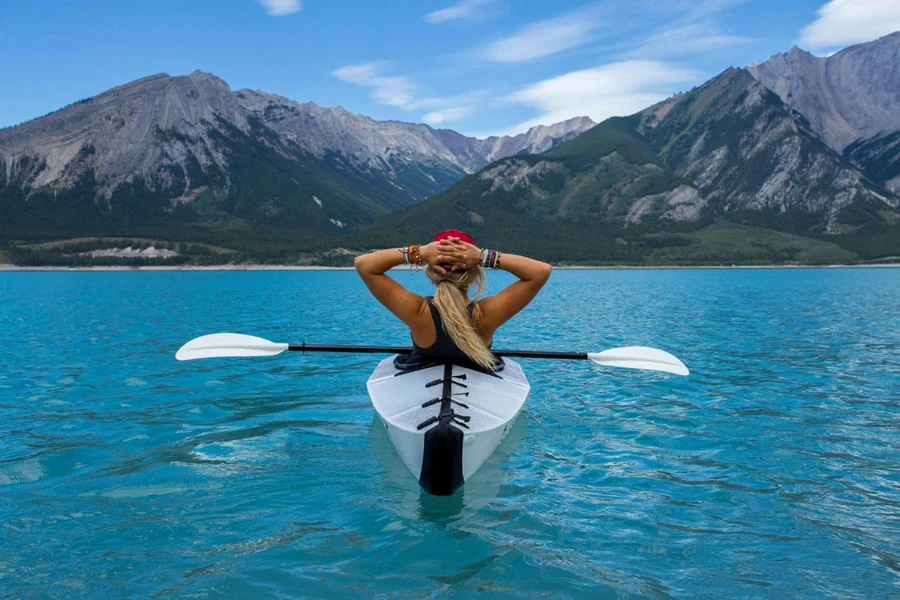
Kayak Skill Levels:
These levels are recognized by organizations such as the American Canoe Association (ACA), and they guide paddlers through a series of skills and knowledge necessary for different water conditions and paddling challenges.
Novice: This level is for those who are new to kayaking, possibly having never paddled or received formal instruction. Novices are generally not comfortable with wet exits or being upside down in water for kayakers, and for canoeists, this might be their first experience switching from tandem to solo paddling.
Class II: At this level, paddlers have some experience, possibly 5-10 paddling sessions in a year. They can perform basic maneuvers like eddy turns, peel-outs, and ferries on Class I water and are beginning to understand river features. Kayakers at this level are comfortable with wet exits and self-rescue.
Class III: Paddlers with more than 10 outings on Class II waters and who have run Class III rapids at least twice fit into this category. They have reliable eddy turns, peel-outs, and can maintain a ferry angle without ruddering. Kayakers at this level have a reliable roll in Class II waters, while canoeists are adept at self-rescuing and using off-side strokes.
Advanced: Advanced paddlers are confident in Class III-IV waters, can perform complex maneuvers, and are interested in playing and surfing river features. They have strong self-rescue skills in challenging conditions. Kayakers should have a reliable roll in Class III waters and be working on advanced techniques like off-side and hand rolls.
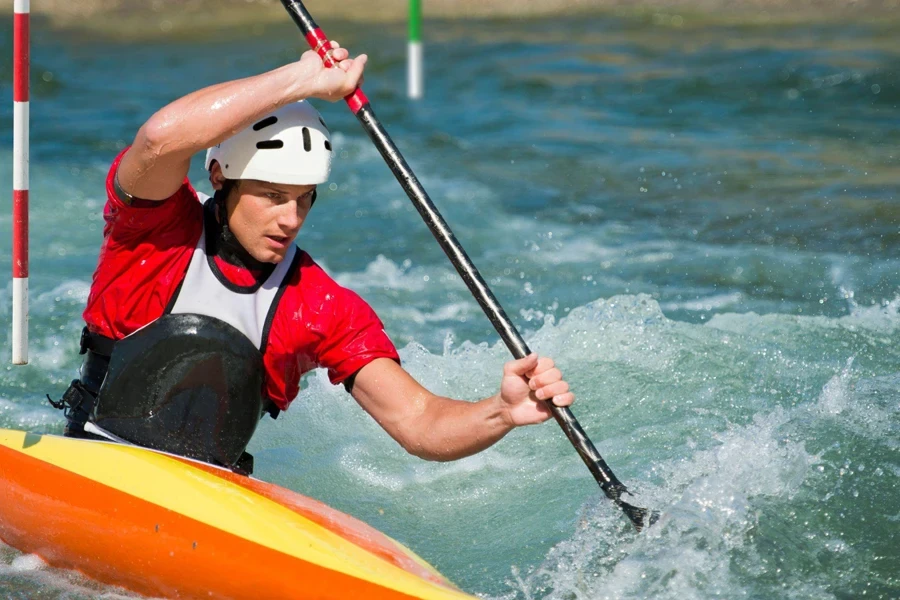
Canoe Skill Levels:
Canoeing skill levels parallel those in kayaking to some extent, focusing on solo and tandem canoeing techniques, mastering strokes, rescues, and adapting to different water conditions. Advanced levels involve handling more challenging waters and conditions with skill and confidence.
Top Picks for 2024
Top Canoes
The North Star Canoe’s Polaris 16 stands out as a top model, especially for tandem paddlers seeking versatility and performance. This canoe is lauded for its balanced design that offers a blend of stability, efficiency, and capacity, making it an ideal choice for a wide range of paddling activities from serene lake excursions to moderate river adventures. The Polaris 16 is equipped with ample storage space and comfortable seating arrangements, ensuring paddlers can carry all necessary gear while enjoying extended periods on the water in comfort.
The Mad River Adventure 14 is recognized for its innovative design that combines the durability and stability of a recreational canoe with the agility and performance of a touring model. Its unique multi-chine hull design provides exceptional stability and smooth tracking, catering to both beginners and experienced paddlers. The Adventure 14 also features comfortable, adjustable seats and plenty of onboard storage, making it a practical and enjoyable choice for family outings and day trips exploring a variety of waterways.
Top Kayaks
The Brooklyn Kayak Company’s BKC RA220 Sit On Top Angler Kayak emerges as a leading choice, particularly for fishing enthusiasts. This model is celebrated for its robust design that incorporates a stable platform, making it an excellent vessel for anglers who prioritize stability and space for their fishing expeditions. The kayak’s ample storage solutions, including waterproof compartments and onboard rod holders, cater to the practical needs of a day out on the water, ensuring all fishing gear is securely stowed yet readily accessible.
Pelican’s The Catch 110 HyDryve II also ranks highly among the top kayaks of 2024, distinguishing itself with its innovative pedal drive system. This feature allows paddlers to navigate the waters hands-free, which is a significant advantage for anglers who need to focus on casting and reeling in their catch. The kayak’s design emphasizes comfort and efficiency, with an adjustable and ergonomic seating system that supports long hours on the water without compromising on performance. Its construction is geared towards providing a smooth and responsive paddling experience, making it a versatile choice for various water conditions.
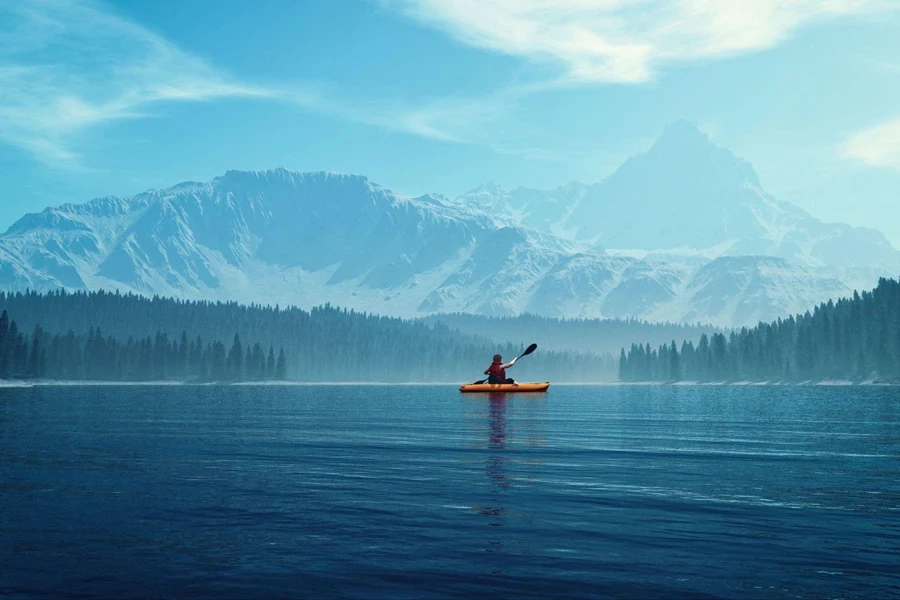
Conclusion
In the 2024 canoe and kayak market, blending tradition with innovation offers diverse opportunities for business professionals and online retailers. Understanding the varied preferences from traditional designs to modern performance features is key to catering to different paddler needs. Retailers can enhance their inventory and marketing strategies by focusing on the design elements and advanced materials that appeal to their target audience. Staying updated on market trends enables professionals to advise customers effectively, improving the purchasing experience and driving sales in the dynamic paddling industry.
